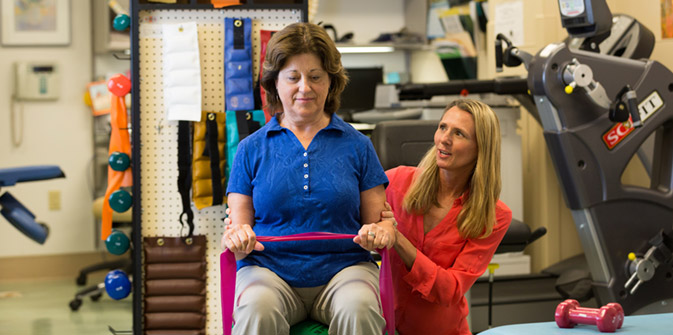
Interventional Care
When noninvasive remedies don’t relieve chronic pain, your UNM Health doctor may recommend an interventional pain relief procedure to block or calm your symptoms.
Doctors use real-time imaging to guide tiny medical instruments through your skin to block, remove or stimulate that nerves or tissue that cause your pain. These minimally invasive procedures offer quicker recovery and less scarring than traditional surgery.
Explore Interventional Pain Options
These common interventional treatments deliver pain-relieving medication and/or anesthetic to the areas of your body that cause discomfort or pain.
Your doctor may recommend an injection to one of the following areas:
- Epidural area – surrounds the spinal cord
- Facet joints – sit between vertebrae
- Lumbar sympathetic nerves – flank the spine in the lower back
- Medial branch nerves – connect to facet joints
- Sacroiliac (SI) joint –located in the pelvis
- Stellate ganglion nerves – lie along your voice box in the neck
- Trigger points or muscle knots – cause pain in surrounding areas of the body
Doctors can use nerve blocks to diagnose and treat the source of your pain.
More severe cases may require surgery. We offer:
- Epidural adhesiolysis, where surgeons insert a thin, flexible tube near the spine to deliver medications that eliminate painful scar tissue.
- Kyphoplasty for abnormal wedging o the vertebra.
- Vertebroplasty, to stabilize a fractured vertebra.
- Lumbar decompression, which removes fragments of bone and ligament through tiny incisions to create more space in the spinal canal and treat spinal stenosis.
Because these treatments are minimally invasive, you’ll likely experience less discomfort and a faster recovery.
Ask your doctor about nerve stimulation, pain pumps or radiofrequency.
In nerve stimulation, you’ll receive a temporary device or electrodes that send a gentle electrical current to disrupt pain signals.
A pain pump is a small device implanted under your skin to deliver medication directly to a painful area. With this technology, you’ll need much smaller doses than oral medication.
Pulsed radiofrequency applies short bursts of energy to a nerve to stun it and prevent the transmission of pain signals. Radiofrequency ablation uses heat to eliminate nerves that communicate pain to your brain.
Make an Appointment
To schedule an appointment, call 505-925-4431 for referral information.
